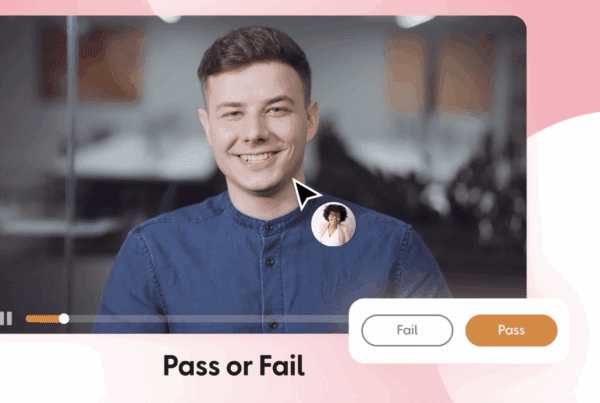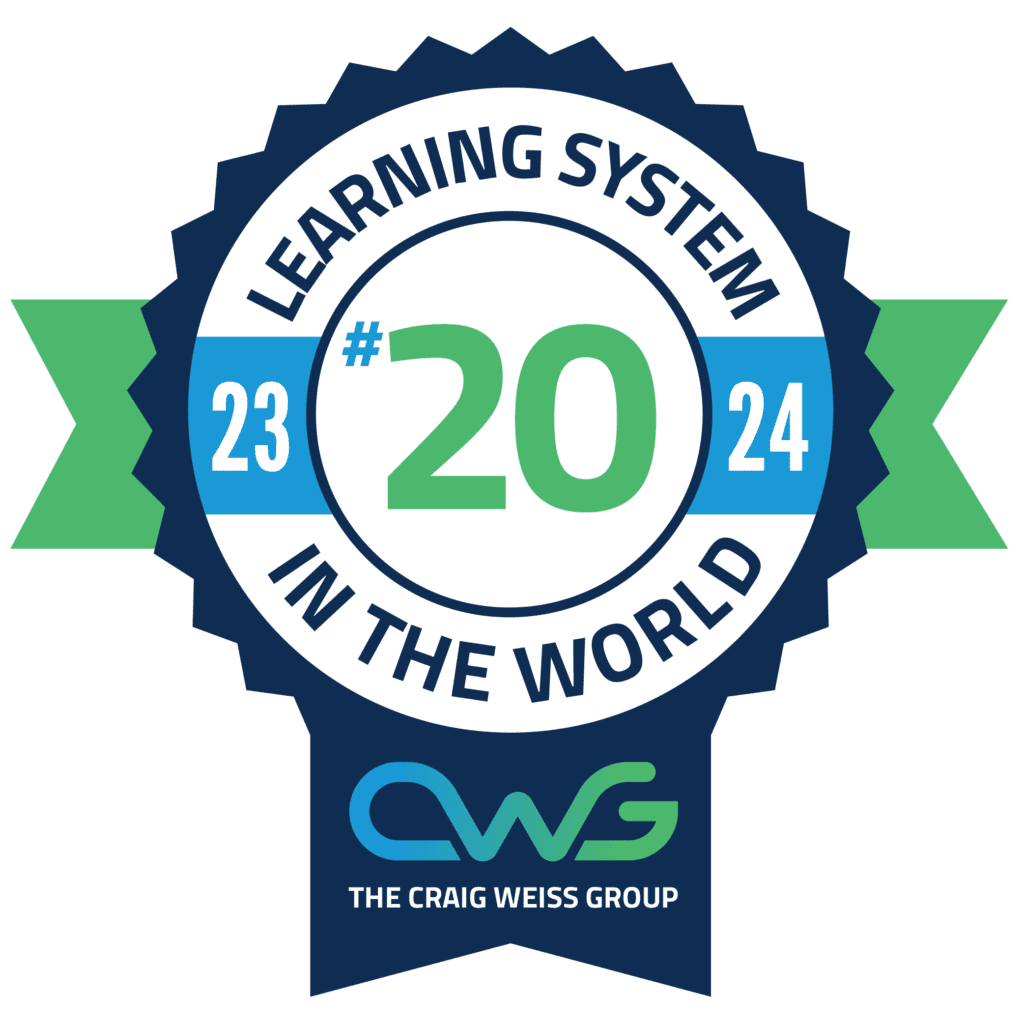Successful organisations are agile. Able to shift gears seamlessly. Pivot focus without delay. Deploy manpower with a broad range of skills and experience to achieve short-term objectives and long-term goals with ease. Scale ideas, innovations, products, services, and more with minimal disruption.
Strong leaders recognise this.
They know that unlocking workforce potential is paramount to achieving a level of success that they can only dream of.
Our economy is fuelled by innovation and evolution.
This means that an agile, adaptable workforce, one that focuses on skills and competencies and not solely job titles, is paramount. To do this you need insight. Knowledge. Upskilling. This explains the rise of skills-based organisations and the importance of modern L&D strategies.
So, what does this look like in practicality? Simple. A skills taxonomy.
Below is a comprehensive guide to skills taxonomies. From why organisations need one to the key components, how to build one, and much more. But first a definition. 🤔
What Is a Skills Taxonomy?
A skills taxonomy is a hierarchal framework that organises and categorises an organisation’s range of skills. This enables them to identify, define and measure core competencies effectively and align decision-making with short- and long-term goals.
Unlike skills framework, ontology maps and competency models, skills taxonomies organise skills into hierarchal skill clusters or defined skillsets, providing a structured and standardised model to identify, classify and manage skills.
Why Organisations Need a Skills Taxonomy
So, we’ve outlined what a skills taxonomy is, it’s time to clarify why teams across an organisation use the hierarchal framework to positively impact organisational learning.
The top-level skills taxonomy pitch is straightforward.
It creates a unified understanding of an organisation’s performance, including an in-depth understanding of knowledge and skills.
This enables organisations to effectively deploy effective L&D, and support employee development and career progression, ultimately aligning day-to-day activities with short- and long-term goals.
For learners, a skills taxonomy provides a structured framework to understand and develop skills, aligning them with L&D goals.
Basically, it can clearly outline career development by identifying areas for improvement.
This can improve individual engagement and motivation, helping learners to achieve their professional ambitions. For L&D teams, a skills taxonomy helps to create a more structured, standardised approach to understanding and upskilling people organisation-wide.
Having a clear framework to describe and categorise skills provides deep insight into how to improve performance on an individual and collective basis. This allows L&D teams to create relevant, targeted learning programs to address personal learning needs.
For HR departments, a skills taxonomy improves talent management, simplifies workforce planning and bolsters the hiring process performance. By focusing on candidate skills rather than job titles or degrees, HR departments can effectively upskill and hire, identify L&D opportunities, and even plan for future succession, aligning necessary skills with organisational objectives.
For leadership management, a skills taxonomy allows senior decision-makers to gain a clear, strategic, structured understanding of their workforce’s skills. This allows organisations to identify gaps, and improve talent management, recruitment, L&D, and training, ultimately fuelling growth. 📈
Key Components of a Skills Taxonomy
An effective skills taxonomy features several key components. Each is necessary to gain insight into an organisation’s current skill levels, where there’s a lack and shining a spotlight on areas that would benefit from upskilling.
Below are the key components of a skills taxonomy:
Skill Categories and Subcategories
The first component of any effective skills taxonomy is categorising skills appropriately, including subcategories. For example, technical skills are something like database management, programming languages or AI literacy. The subcategories of soft skills could be something like communication, teamwork or problem-solving.
Proficiency Levels
Once you’ve successfully organised competencies by category and subcategory, the next stage is to assign a proficiency level to each competency. This can be as simple as a grade from A-E or a mark out of 10. The choice is yours!
Job Role Mapping
Now that you’ve identified proficiency levels, the next stage is to map jobs against the skills essential to varying roles and responsibilities within the organisation. This helps an organisation to identify skill gaps and opportunities for L&D, workforce forecasting and improved future hiring.
Alignment with Competencies
Next, explore how the core competencies of your existing workforce align with current skill sets. This will allow you to spot any knowledge or gaps and gain a clear picture of where L&D could be introduced to improve the competencies of your workforce.
Integration with Learning Content
The last stage is to integrate all the information you’ve learned into an actionable L&D plan. Your skills taxonomy can serve as a foundation for organising and prioritising the actions you wish to initiate. So, for instance, if your skills taxonomy has identified that your workforce lacks expansive knowledge of a particular software system or leadership skills, focus L&D on building these.
Below is a table of the key components of a skills taxonomy:
| Key Component | Description |
| Skill Categories and Subcategories | High-level grouping of skills (e.g., technical skills, soft skills, leadership). Subcategories break down the broad categories into specific areas (e.g., under technical skills: programming, data analysis, IT support). |
| Proficiency Levels | Describes the depth of expertise within each skill. Common levels include beginner, intermediate, advanced, or expert. Proficiency defines how well an individual can perform a task. |
| Job-Role Mapping | Associates specific skills with job roles. Identifies which skills are required for a given position (e.g., a data scientist may need skills in Python, machine learning, and data visualisation). |
| Alignment with Competencies | Ensures that the skills within the taxonomy align with core competencies necessary for success in a role. Competencies are broader capabilities that encompass various skills (e.g., critical thinking, communication). |
| Or Integration with Learning Content | Connects skills to relevant learning materials, ensuring training and development resources are available to build proficiency in each skill. This alignment helps support upskilling and reskilling efforts. |
How to Build a Skills Taxonomy in L&D
Now the time has come to build your skills taxonomy. The good news is that this doesn’t have to be a complicated or comprehensive process. All you need to do is to follow five straightforward steps.
Step One: Define Organisational Goals
How you want the skills taxonomy to influence your organisational goals is one question, but you can’t answer this if you haven’t already defined your organisational goals to begin with.
So, there you go. Step one. What are your organisational goals? Are they strategic growth? To boost revenue? Build a strong market reputation? Digital Transformation?
Identify key organisational goals and you’ll have the foundation for a skills taxonomy.
Step Two: Audit Existing Job Roles and Skills
Now comes skills audit.
Define the roles within your organisation, break them down into tasks and identify the skills required for each task, prioritising them in order of importance.
Investigate and review the existing job descriptions to make sure they accurately reflect the required skills for the job role. For instance, if you’re reviewing a team leader or managerial role, make sure that they demonstrate leadership qualities.
Step Three: Group and Categorise Skills
Next, group and categorise the skills needed to achieve operational objectives.
Organise them into broader categories and subcategories and map these skills into specific roles and functions. Ask yourself what your strategic goals are, why you want to achieve them and how they relate to your overall operational objective.
Document the skills identified then create broad categories, grouping similar, characteristic skills together, for instance, technical skills, leadership skills, communication skills, project management skills, etc.
Break down skills into more specific categories. For instance, technical skills could include AI or software literacy skills, programming abilities, etc. Then organise skills into a hierarchy, with the broader skills at the top and the specific skills underneath.
Step Four: Assign Levels or Progression Stages
Once you have the framework it’s time to assign levels or progress stages.
This is where you allocate skill levels to better understand overall efficiency and identify where further L&D would be needed.
These don’t need to be complicated.
Something as simple as Beginner, Intermediate and Expert can be sufficient to clearly identify and categorise current aptitude or performance. And, of course, should someone’s knowledge and understanding increase, so too will their assigned level of aptitude.
Step Five: Connect L&D Content to Career Paths
The final step is to connect L&D to career paths.
These reflect the L&D people need to further develop their careers. So, for instance, let’s say you know someone on the fast track to corporate management. They have demonstrated the core skills needed to be a leader. But right now, these skills are unpolished.
L&D leadership content can further bolster the individual’s skill set and potential to become a stellar leader, someone who gets the most out of their teams, inspires everyone and drives the business forward. ⭐
If you’re looking to bolster your L&D, improve workplace competence and drive your organisation into the future, Thirst can help you!
Don’t forget too that these five steps are an iterative process. In today’s workplace environment nothing stands still – just look at how AI is shaping our working world! Each step can be tailored to the organisation and individual.
Skills Taxonomy vs. Skills Ontology: What’s the Difference?
While both skills taxonomies and skills ontologies categorise skillsets, taxonomies are hierarchical and focus on classification whereas ontologies are more flexible, capturing the relationships and nuances of skills, roles and tasks – Taxonomies are useful to L&D, workforce development and recruitment.
Ontologies are more dynamic, interrelated, semantic, AI-friendly, and focus on contextual meanings. They capture the complex relationship between skills, roles and tasks, offering an adaptable, flexible framework.
How Is AI Transforming Skills Taxonomies?
Like pretty much everything else, AI is revolutionising skills taxonomies. But how?
Let’s review all the ways that AI-fuelled platforms like Thirst, and a whole wealth of innovations in the learning space, are transforming how we learn and develop…
The Rise of Dynamic Taxonomies Powered by AI and NLP
AI-driven dynamic taxonomies signify a shift from static, human-managed categorisation to adaptable, automated systems that understand and categorise content in real time, improving efficiency and relevance.
This allows organisations to partner L&D with required skillsets, addressing learner needs, and upskilling individuals and organisations through tailored, targeted and efficient learning experiences.
NLP (natural language processing) helps L&D departments to understand and tag content, creating dynamic semantic understanding. This tagging can be used to auto-generate a taxonomy or complement an existing taxonomy with important insights.
Modern adaptive learning platforms also provide real-time feedback, allowing users to tailor learning experiences to individual preferences, therefore fostering engagement, reducing frustration and sustaining interest throughout the whole learning process.
In short, the rise of AI-fuelled dynamic taxonomies illustrated above drastically enhances the whole learning process, helping learners acquire and retain information more efficiently.
Use Cases: Real-World Applications in L&D
So, now that we’ve got a solid grasp on skills taxonomies in a practical way, let’s have a look at the real-world L&D applications of skills taxonomies, from workforce planning to performance reviews and coaching.
Workforce Planning
Skills taxonomies provide a structured framework to manage and categorise the entire organisation’s individual and collective skillset. This promotes strong talent identification, gap analysis and strategic workforce development. 💪
Upskilling and Reskilling Initiatives
A structured framework to identify skill gaps, align training with commercial needs, and promote personalised learning to enhance workforce agility and ultimately performance, is paramount. This is exactly what an L&D skills taxonomy provides organisations, even anticipating future needs.
Internal Mobility and Career Development
Once organisations understand skill gaps, they’re free to develop effective L&D programs to upskill and reskill employees, helping them to add real value to an organisation and develop their careers.
Skills taxonomies provide the insights needed to encourage organisations to make astute decisions to benefit both employees and the organisation.
Personalised Learning Paths
By using a skills taxonomy to map and categorise skillsets across the whole workforce, organisations can easily personalise learning paths, helping individuals to better understand the skills required for advancement, and ultimately promoting internal mobility and workforce agility.
Performance Review and Coaching
Organising and categorising skills leads to objective, data-driven performance reviews and, consequently, high-impact coaching in a clear, focused manner.
This, ultimately, results in targeted L&D, objective performance evaluation, and improved career progression.
Best Practices for Maintaining and Updating Your Skills Taxonomy
Like most everything else in today’s modern commercial world, skills taxonomies don’t stand still. They evolve. Or at least they should do. Maintaining and updating your skills taxonomy is paramount.
How do you achieve this? By following the best practices we’ve listed below.
Continuous Managerial and Employee Input
Combine taxonomies with continuous managerial and employee input and you’ll develop a structured way to manage and understand employee skills, facilitate targeted training, promote continuous career development, and align the workforce with employee goals.
Tie Updates to Evolving Organisational Priorities
Organisational priorities shift, ebb and flow. Sometimes in the blink of an eye.
Having a structured framework to identify, categorise and track skills, one that’s backed by data, sound planning for every eventuality and targets upskilling and reskilling initiatives is a surefire way to capably and confidently manage organisational priorities when they arise.
Link to Performance Data and Market Trends
By mapping the skills of various roles to performance data and market trends organisations can identify those skills critical to ongoing success, addressing any skills gaps, and allowing organisations to put actions in place to address what’s critical to success.
Similarly, skills taxonomies can be integral to identifying emerging skills and evolving technologies demanded by the market, proactively future-proofing the workforce by upskilling and reskilling employees. ☺️
AI-assisted Real-Time Tools
A structured framework for classifying and understanding skills, especially one that’s automated using AI to perform tasks such as talent matching, skill gap analysis and personalised learning experiences, streamlines HR processes by enhancing talent matching and job profiling, encouraging data-driven decision-making whilst automating tasks–all in real-time.
Final Thoughts
Adopting a skills taxonomy as part of your skills-first L&D strategy will promote organisational fluidity, competence and adaptability; attributes that are intrinsic to meeting short-and-long-term goals and achieving prolonged success.
This promotes clarity and alignment by adopting a standardised and clear definition of the essential and desired skills required for different roles and reduces ambiguity by eliminating guesswork and confusion over what specific skills are required to propel the organisation forward.
But there’s so much more than that. Skills taxonomies make it easier to create personal and effective learning pathways, allow organisations to more efficiently allocate resources and identify strong employee development opportunities.
Ultimately, this results in improved talent management because organisations can more easily access employees’ proficiency levels consistently and accurately, making decision-making easier while fostering a dynamic and adaptable workforce, and making planning and talent acquisition easier.
Sound good? Want to build your own skills taxonomy? Explore how Thirst can help you build, manage and scale your skills taxonomy.
Got 2 Minutes?
If your organisation is struggling with disengaged learners, Thirst has the solution. 🔥
Thirst is an AI-powered learning platform that helps L&D teams of all sizes boost learner engagement and create experiences tailored to today’s learners.
Take a guided tour today and see Thirst in action.
For more e-learning insights, resources and information, discover the Thirst blog.
You may also enjoy:
Mandatory Training vs Statutory Training: A Guide | What is a Learning Management System? Ultimate Guide | 20 Essential Soft Skills for the Workplace (+ How to Develop Them)







